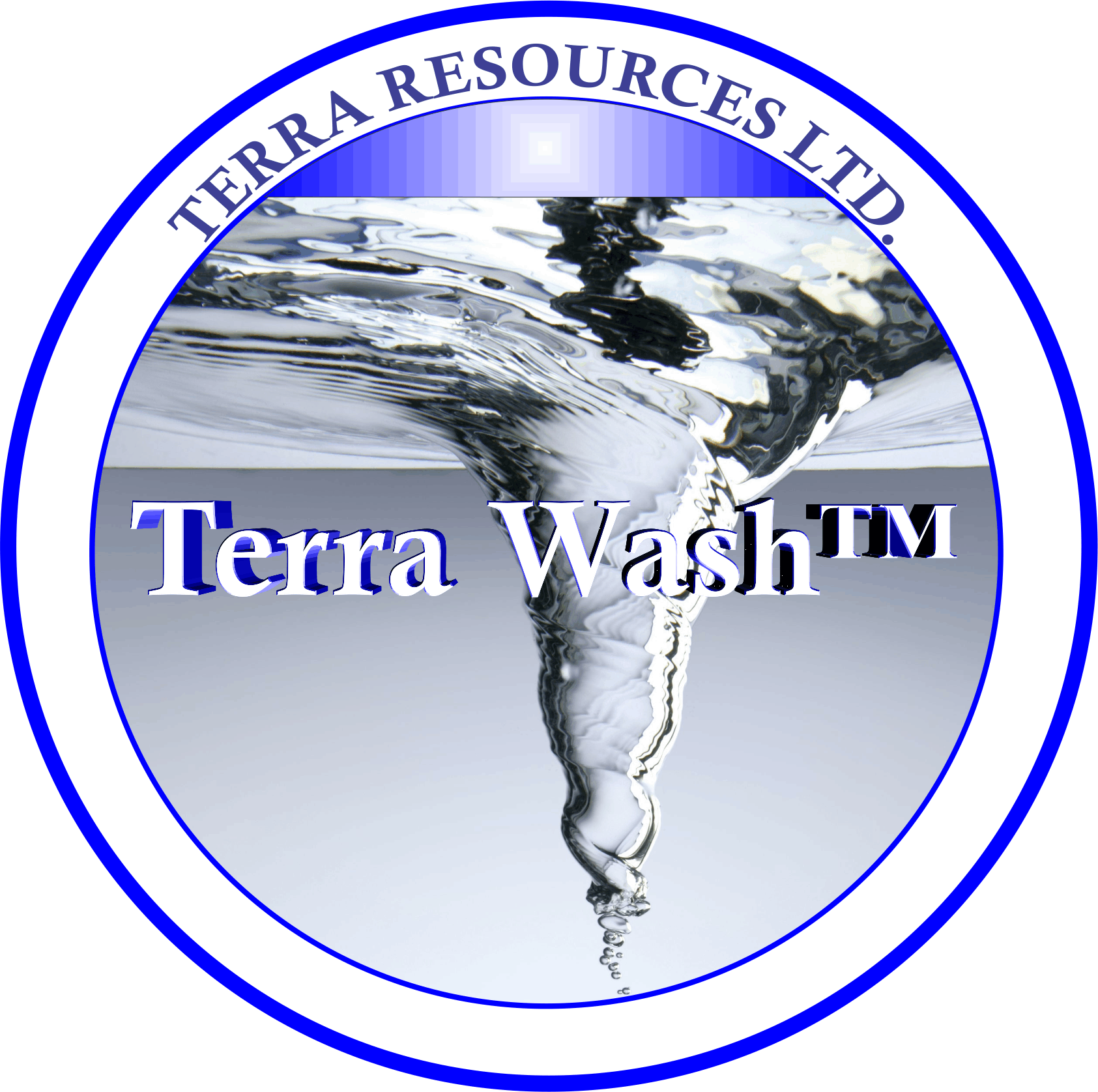
Soil Washing: Terra Wash™
 Soil washing is the method championed by Terra Resources, Ltd. for the treatment of hydrocarbon and insoluble chemical contaminated soils. Soil washing is effective in the treatment of inorganic contaminates and organic contaminates. This method involves the treatment of contaminated soils by chemical means, such as a surfactant, in conjunction with mechanical agitation. The concept involves literally washing the contaminates from the soil using specially designed equipment. Terra Wash™ involves the use of soil washing units (SWUs) as the soil washing component.
Soil washing is the method championed by Terra Resources, Ltd. for the treatment of hydrocarbon and insoluble chemical contaminated soils. Soil washing is effective in the treatment of inorganic contaminates and organic contaminates. This method involves the treatment of contaminated soils by chemical means, such as a surfactant, in conjunction with mechanical agitation. The concept involves literally washing the contaminates from the soil using specially designed equipment. Terra Wash™ involves the use of soil washing units (SWUs) as the soil washing component.Gravimetric Soil Washing
Gravimetric concentration of heavy metals contaminated soils utilizing soil reduction units (SRU) derived from Arctic Miner™ mining systems designed by Cyril and Lawrence Wood are the primary method and means for the treatment of heavy metals contaminated soils in the Terra Wash™ soil remediation concept. Contaminated soils are introduced into a gravity classification system and, at the very least, reduced in volume through concentration of the heaviest fractions containing the heavy metals. This reduces the resulting concentrate into manageable volumes. Reductions in volume of up to 500:1 are feasible. This would reduce the volume of soil that would normally have to be taken to a land fill for long term storage to 1/500th of the original volume, or one cubic yard for every 500CYDs treated. Used in conjunction with the soil washing units (SWUs), SRUs would provide an immediate heavy metals capability not found in competing systems. The use of Arctic Miner™ gravimetric SRUs have been used in Small Arms Firing Range and Shotgun range closeouts and safety remediation.Costs for Treatment
Costs for treatment of contaminated soil using soil washing can be as low as $10/CYD. Operational costs vary with the dilution ratio of the surfactant or solvent used, the chemical loss, and the maintenance requirements of a given system.Production capacities of up to 100CYD/HR are feasible utilizing the proposed Terra Wash™ method and apparatus. A prototype system with a capacity of 7.5TPH (5CYD/HR) was completed and tested in 1991.